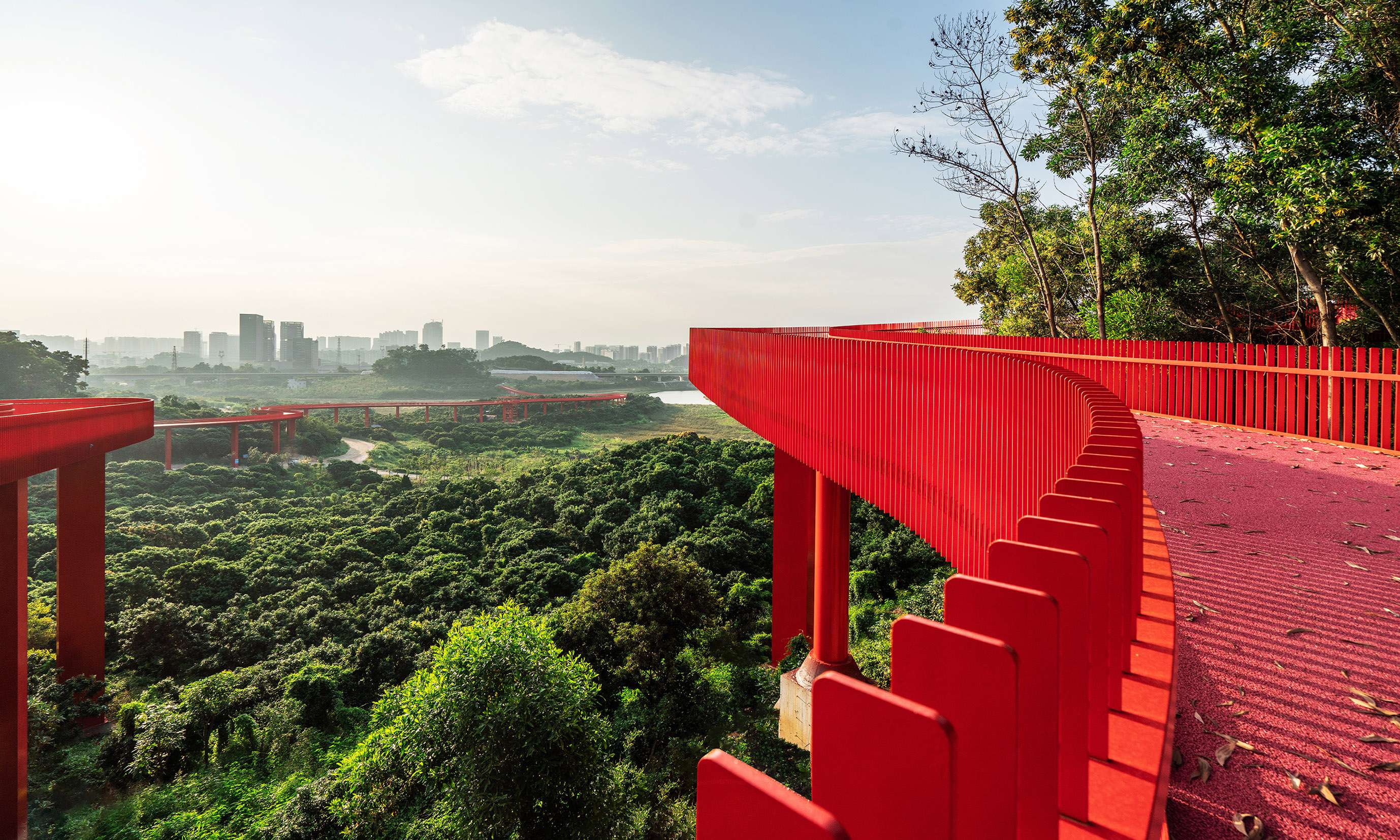
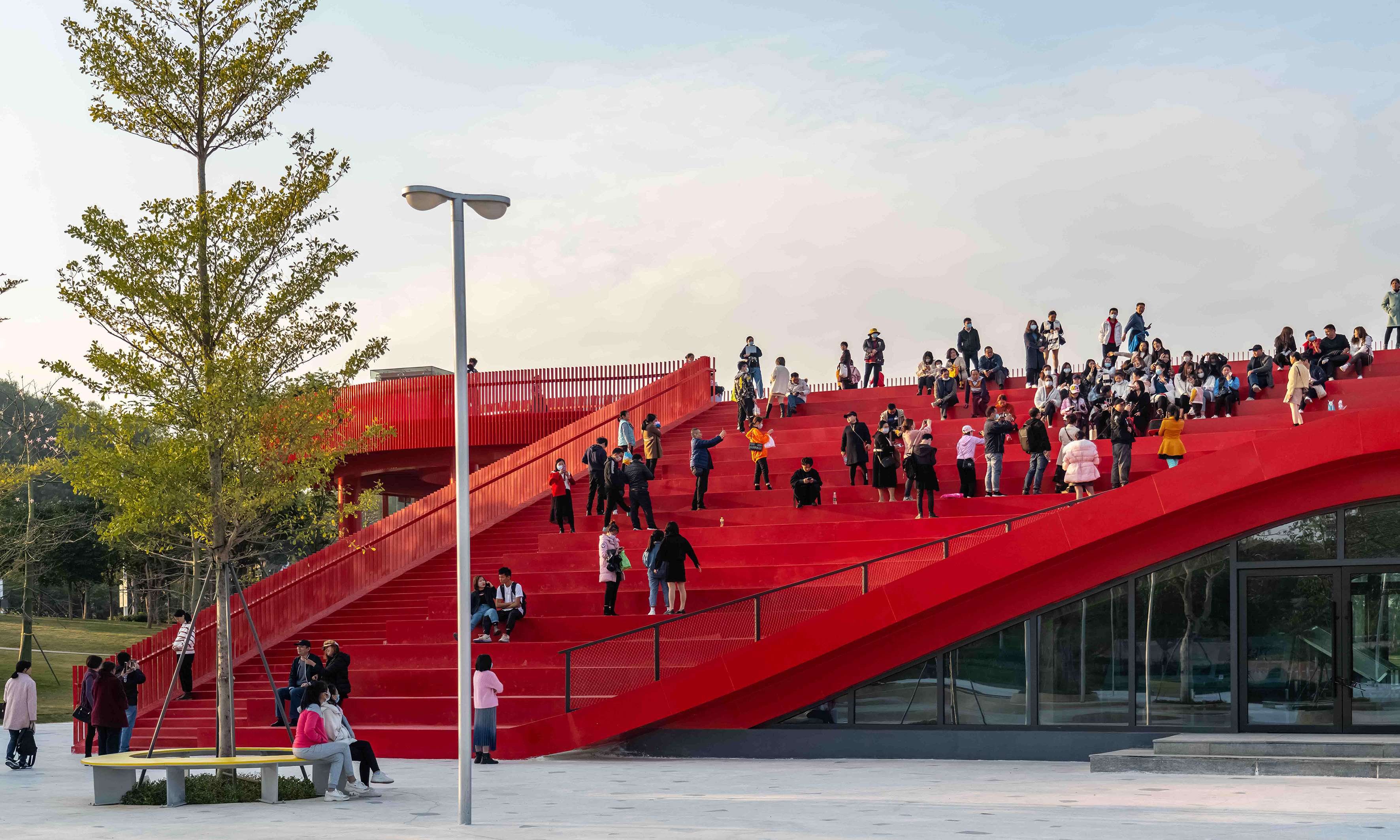
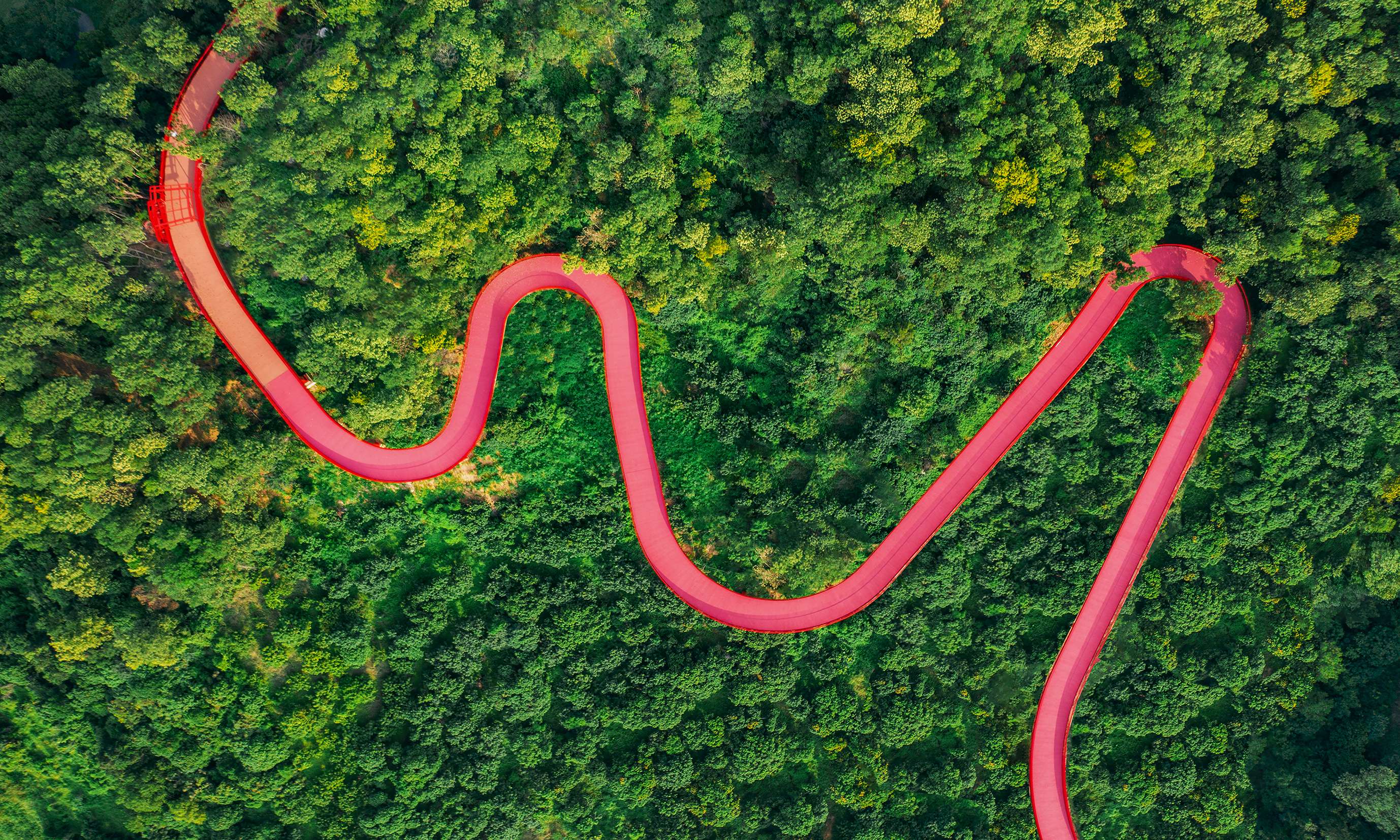

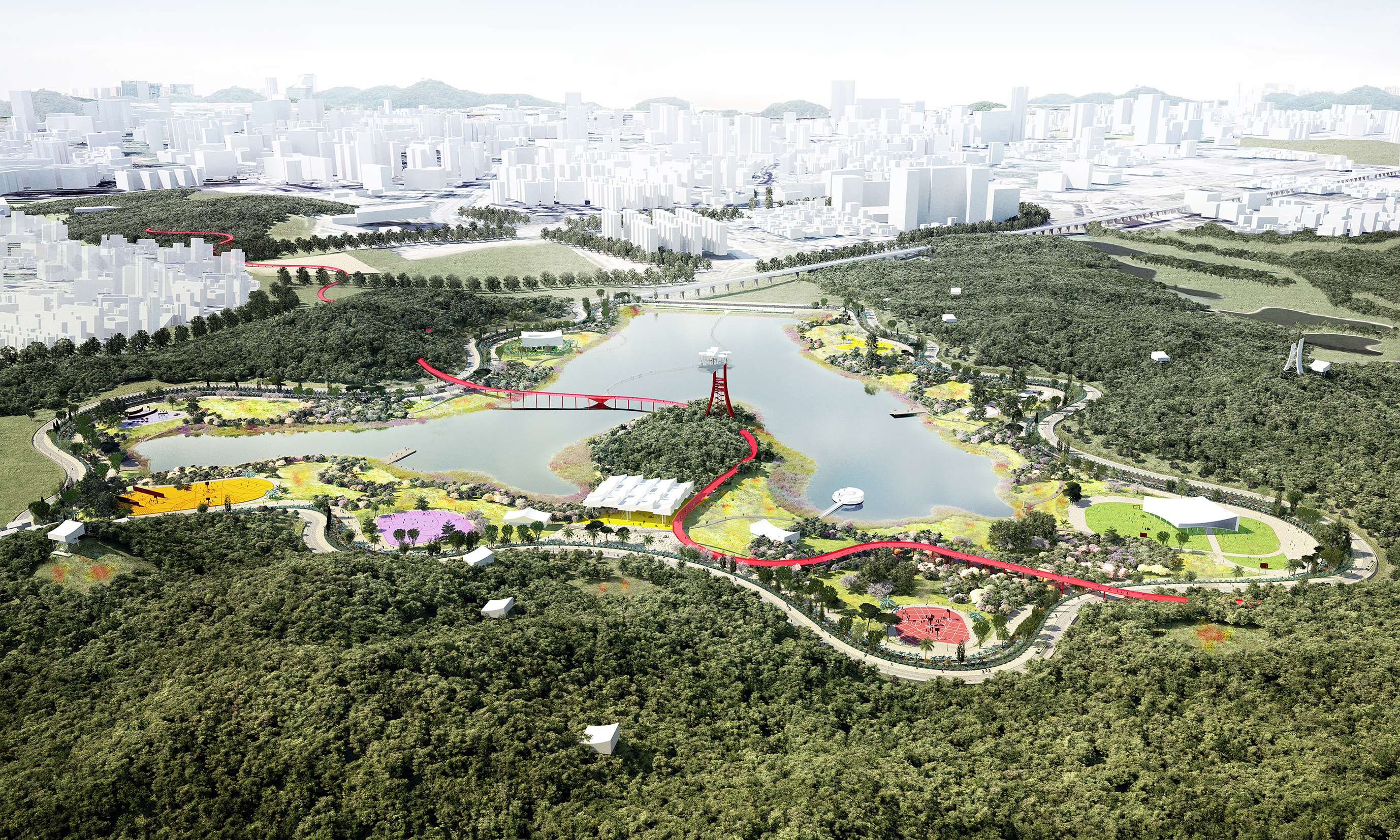
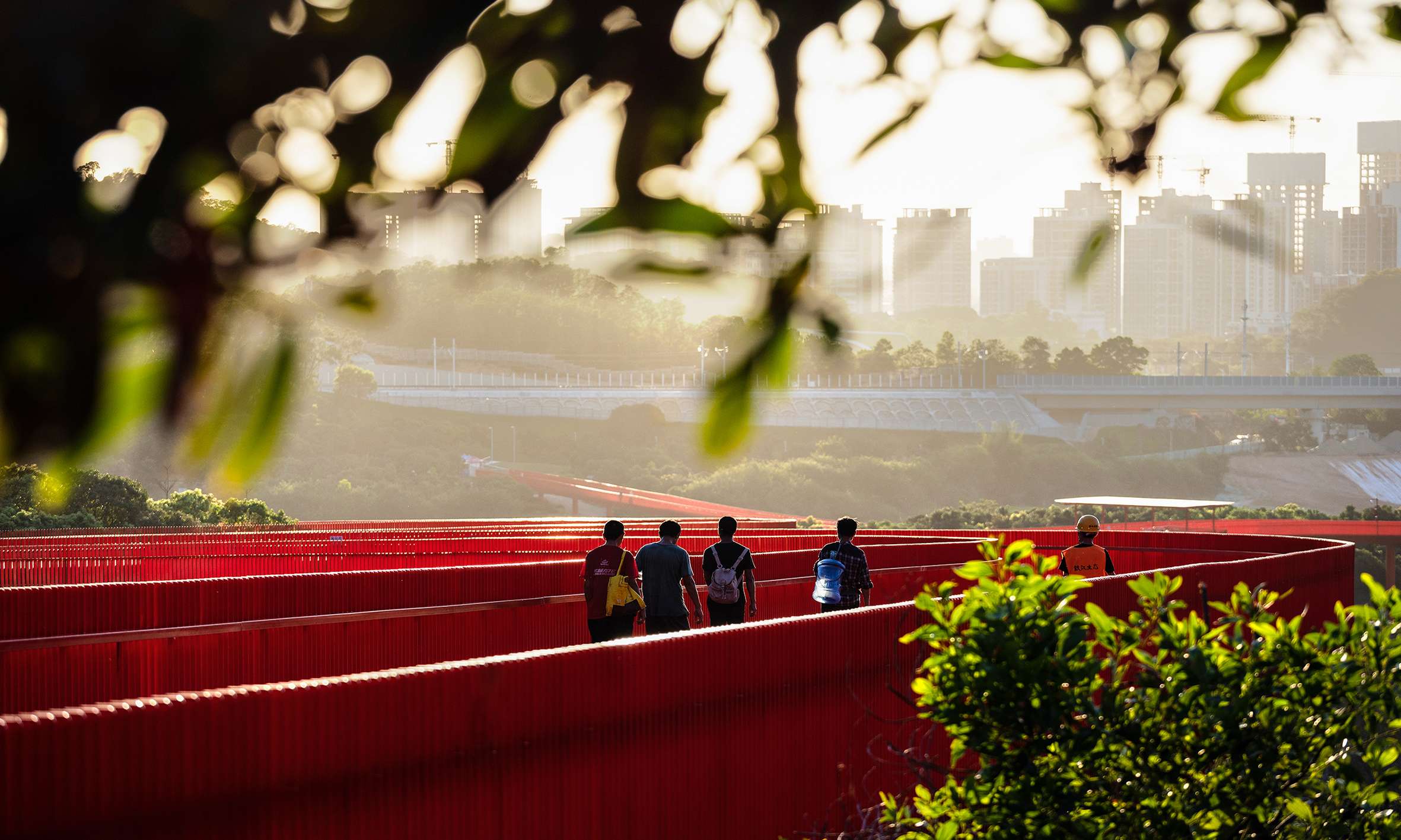

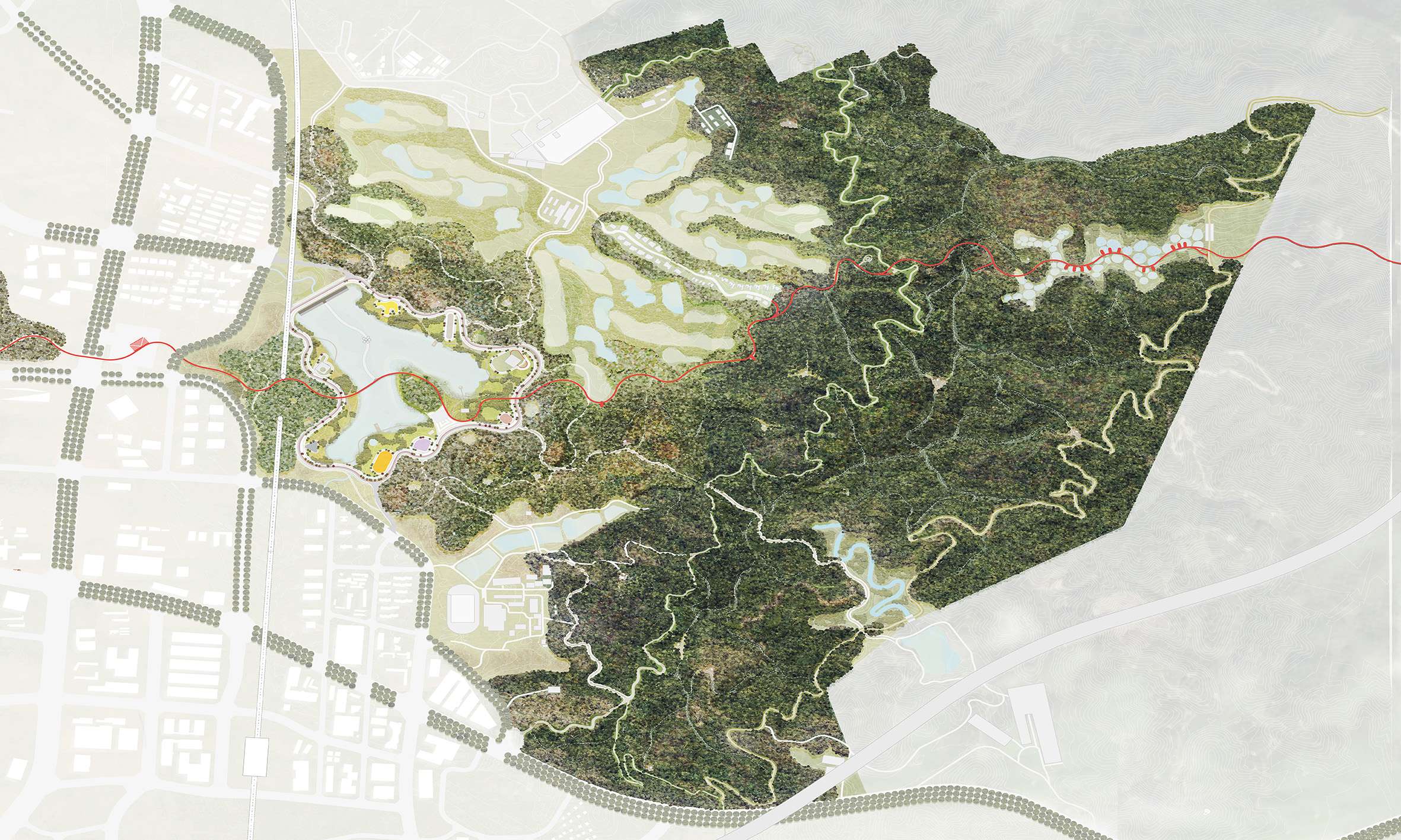



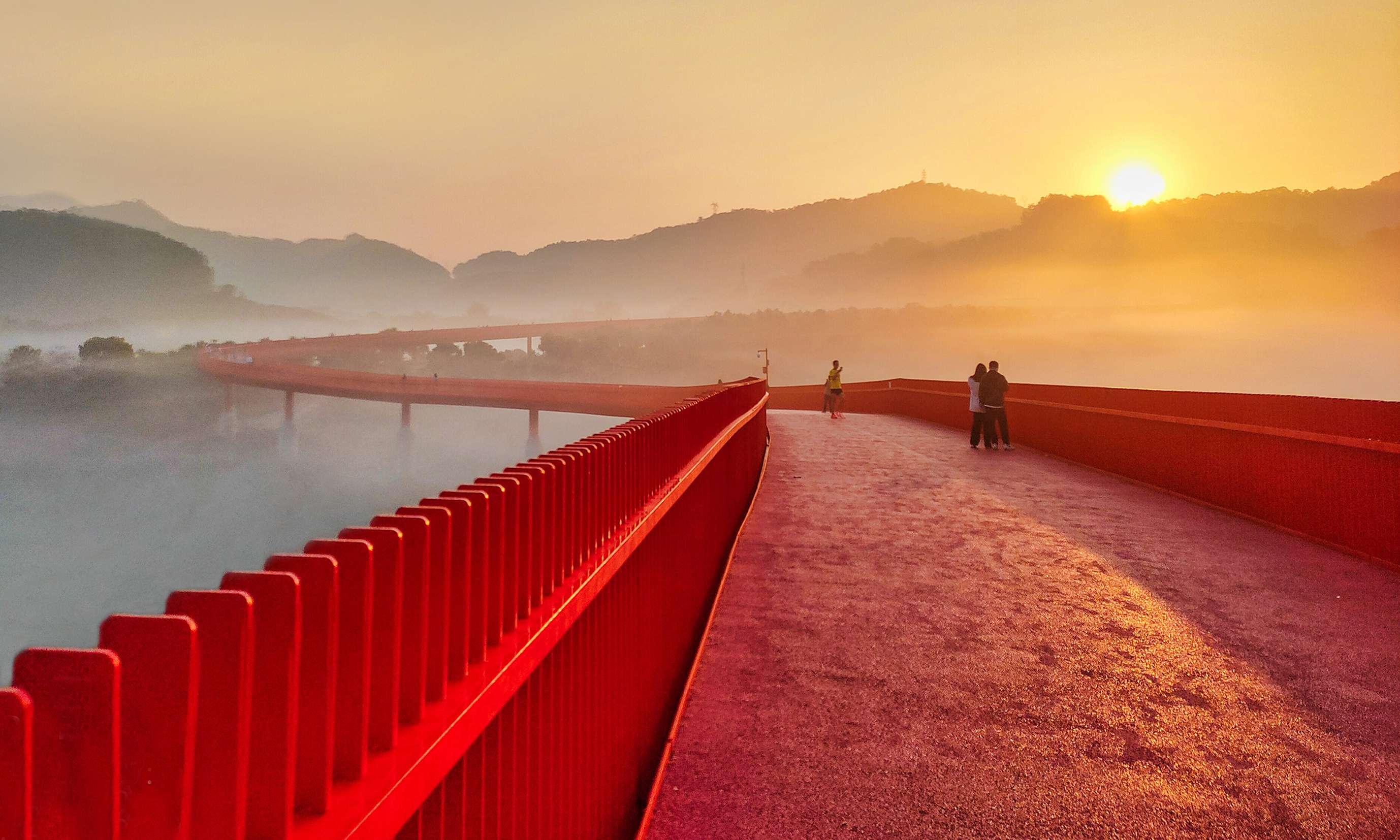
Parque Deportivo Forestal de Shenzhen
Parc Esportiu Forestal de Shenzhen
Forest Sports Park Shenzhen
The Pearl River Delta has its origins in dynamic nature, with a stunning biodiversity but rapid urbanization required a strong policy on nature preservation. In 2018 LOLA, TALLER and L+CC won the competition for a 600-hectare forest and sports park in Guang Ming, Shenzhen, China. As this region finds its success in innovative industries, the park focuses on innovation in sports and ecology. Since the completion of Phase I in 2020, the Guang Ming Town Forest and Sports Park is part of the world’s most innovative Delta.
Guang Ming Town is a showcase of various new ways in which city and nature can build a fruitful relationship. The Forest and Sports Park is an important link in the green network of the city and both forest and sports life shows itself in its most dynamic and innovative way and the park keeps on developing over time. The loop around the lake is the starting point of a network of paths and trails. An elevated red path links the forest park to the central city park and the rest of the mountain forest. A scenic route, that goes through different atmospheres and passes by multiple points of interest. It also functions like a pedestrian highway, with rhythmic exits and no steep slopes.
In a natural forest setting, visitors get to know both forgotten sports and the latest techniques in sports. A range from open valleys and mountain forest offers the natural background for sports and leisure. The Red Path forms a landmark that connects the park to the city and the forest; a scenic route that passes by all different types of forest. In the park a series of pavilions hosts functions like a restaurant, restroom, viewing platform and forest cabin. In order to minimize the environmental impact, the pavilions are modular and prefabricated. By placing them on stilts they avoid direct contact with the ground and at the same time provide shadow so that visitors can escape the summer heat.
The construction of the park contains two phases. The first phase opened in 2020, including the red path, entrance plaza, forest area and a temporary loop at Bihu area. It has been a destination since the first day that people are able to use the park and its facilities. The second phase will be built later, including five innovative sports multi-fields, a nursery loop, a botanical R&D center and a sports R&D center.
Project webpage: www.lola.land/project/forest-sports-park
Compliance with the UN Sustainable Development Goals:
SDG goal 3: Good health and well-being
- In a natural forest setting, people will be able to get to know new and forgotten sports, as well as the latest techniques used in sports.
- Two R&D centers, one for sports, one for botany are centrally located in the park.
- Open valleys, lower hills and mountain forest offer a natural background for sports and active leisure.
- The park will keep on developing over time, continuously enriching both biodiversity and possibilities for active leisure and sports.
- The path is designed like an attractive pedestrian highway, with rhythmic exits and no steep slopes. This way, not only healthy young people, but also the elderly, families, and people with disabilities can visit the forest.
SDG goal 9: Industry, innovation and infrastructure
- As this metropolitan region finds its success in innovative industries, the park focuses on innovation in sports and ecology.
- Two R&D centers, one for sports, one for botany are centrally located in the park.
- A specific site challenge was that it was planted with monocultures. This is overcome by changing the conditions, planting, maintaining, monitoring and adjusting the ecology. This form of ‘creating nature’ is an innovative process, in which research, design and development go hand in hand.
- The base of the Forest and Sports Park is defined by a network of paths and trails. Around the lake a loop is laid out for all velocities, connecting all main programs.
- The landmark elevated path connects the park to the city and the forest; forming a scenic route that passes by all different types of forest. Since it is elevated, it does not influence the nature and at the same time creates shadow places.
- The landmark four-kilometre-long red bridge sometimes winds high up between the treetops and then down again through the forest, which has great height differences. The path is designed as a universal access route with a maximum gradient of five percent.
- An electric bus stops at all important destinations, facilitating access for all user groups.
- The route goes through different atmospheres and passes by multiple points of interest. It also functions like a pedestrian highway, with rhythmic exits and no steep slopes.
SDG goal 12: Responsible consumption and production
- In the park a series of pavilions hosts functions like a restaurant, restroom, viewing platform and forest cabin. In order to minimize the environmental impact, the pavilions are modular and prefabricated.
- By placing them on stilts they avoid direct contact with the ground and at the same time provide shadow so that visitors can escape the summer heat.
SDG goal 13: Climate action
- The Pearl River Delta has its origins in dynamic nature, with a stunning biodiversity. The rapid urbanization required a strong policy on nature preservation. Since protection was not enough, we reinvented the relationship between city and nature.
- The Forest and Sports Park serve as an articulation between the city of Guang Ming and the forest reserve.
SDG goal 11: Sustainable cities and communities
- The park will keep on developing over time, continuously enriching both biodiversity and possibilities for active leisure and sports.
- In a short time, it has become a popular site since it opens up the surrounding forests for the city’s residents.
SDG goal 15: Life on land
- The Forest and Sports Park is an important link in the green network of the city.
- On the central park loop, a linear plant and tree nursery is integrated.
- There is a R&D center for botany centrally located in the park.
- The Forest Sports Park contains a 600-hectare urban forest.
- The park is a scenic course that passes by all different types of forest.
- A specific site challenge was that it was planted with monocultures. This is overcome by changing the conditions, planting, maintaining, monitoring and adjusting the ecology.
